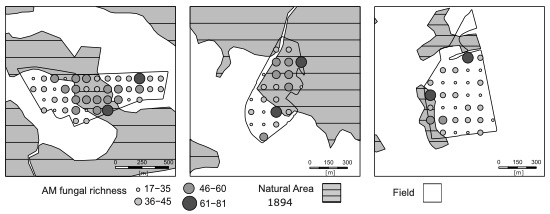New paper about habitat loss and mycorrhizal fungi

Oscar and Meelis, in collaboration with the Soil Ecology Group and other scientists from Tartu University and the Estonian University of Life Sciences, published a new study in Soil Biology and Biochemistry. The study explores the relationship between past natural habitats and current arbuscular mycorrhizal (AM) fungal diversity.
AM fungi are plant root symbionts that help plants capture soil nutrients. However, land use changes from natural habitats to agricultural fields threaten their diversity. In their study, Oscar and his co-authors explored how current and historical natural habitats (as recorded in historical maps) influence AM fungal diversity in agricultural fields. Their results showed that areas where natural habitats were present in the past have higher AM fungal diversity, indicating a legacy effect of natural habitats. Even after land use changes from natural habitat to agricultural field, AM fungal species can persist in the fields for long periods until the habitat becomes unsuitable and AM fungal species from natural habitats are replaced.
The findings provide insight into how AM fungal diversity is threatened by natural habitat loss.
Zárate Martínez O, Hiiesalu I, Sepp S-K, Koorem K, Vasar M, Wipulasena AYAP, Liu S, Astover A, Öpik M, Pärtel M, et al. 2024. Arbuscular mycorrhizal fungal diversity in agricultural fields is explained by the historical proximity to natural habitats. Soil Biology and Biochemistry 199: 109591